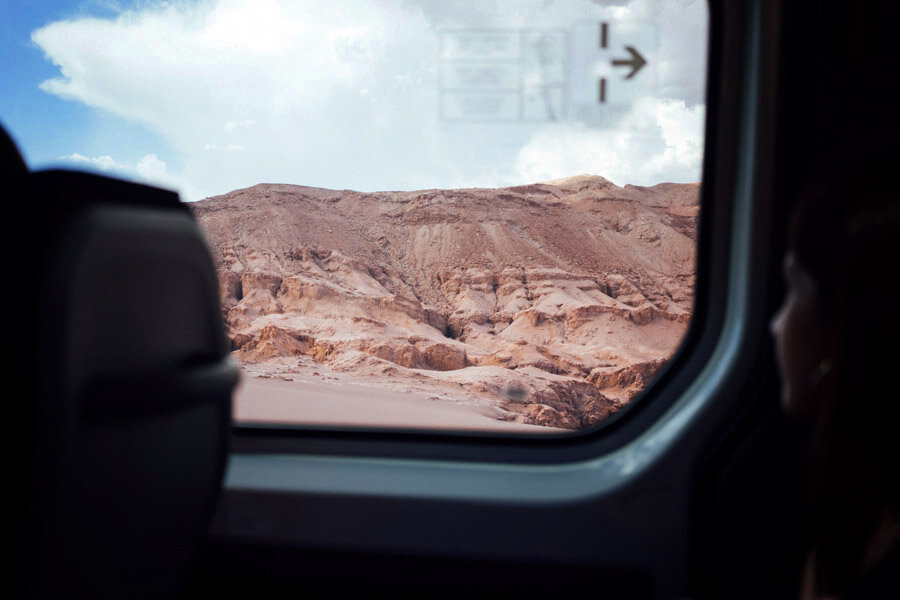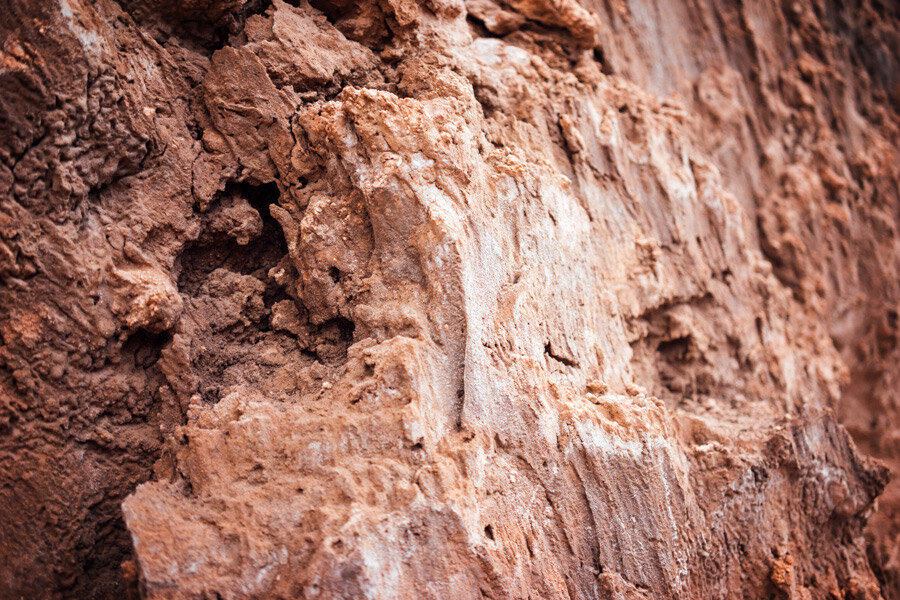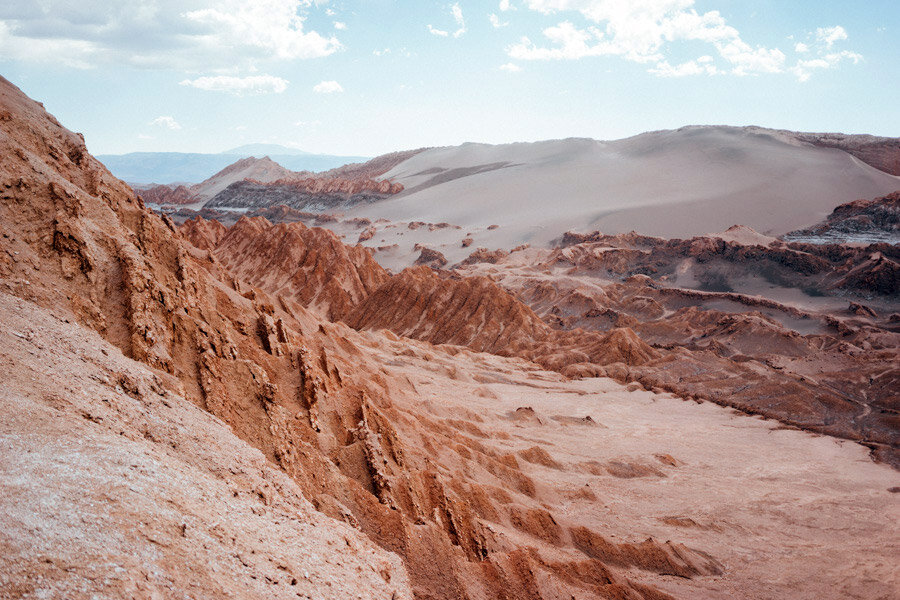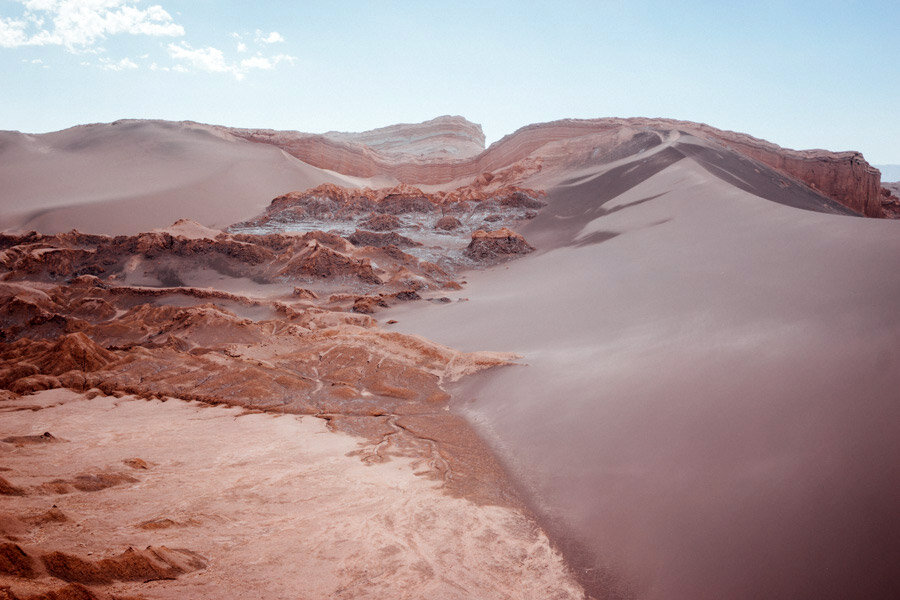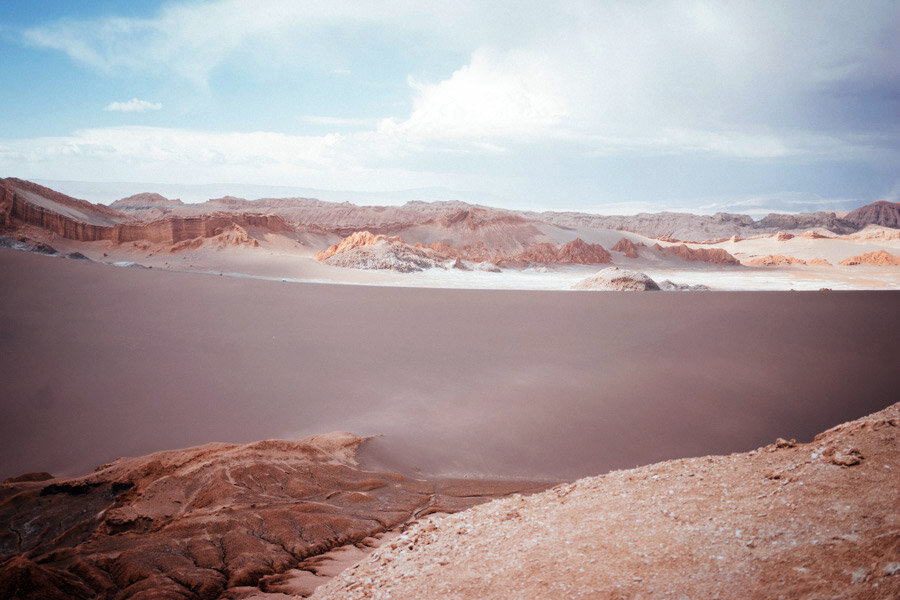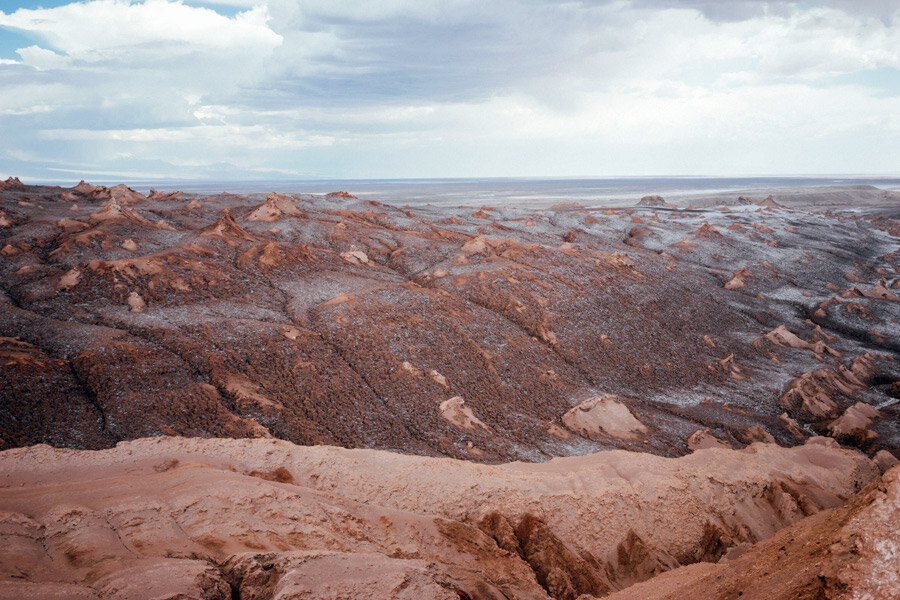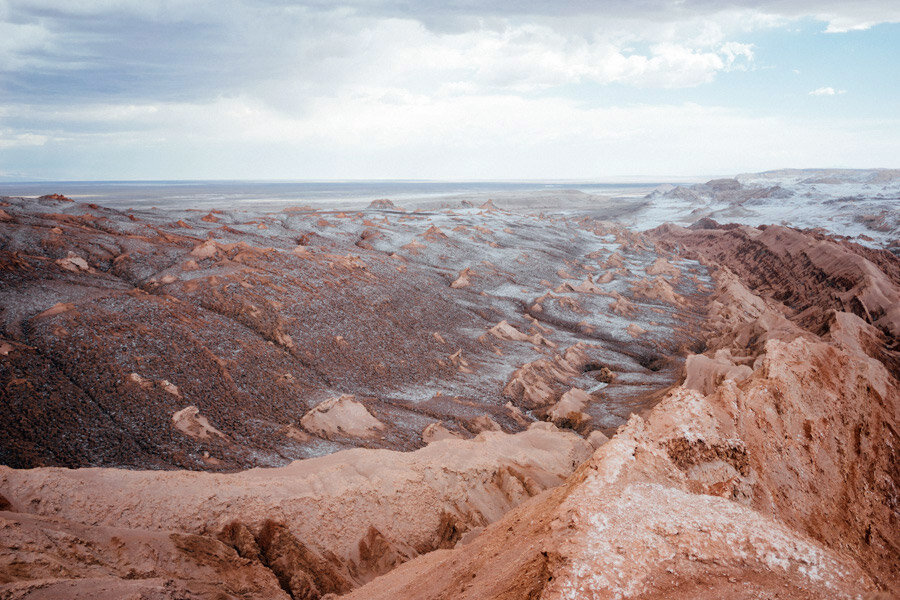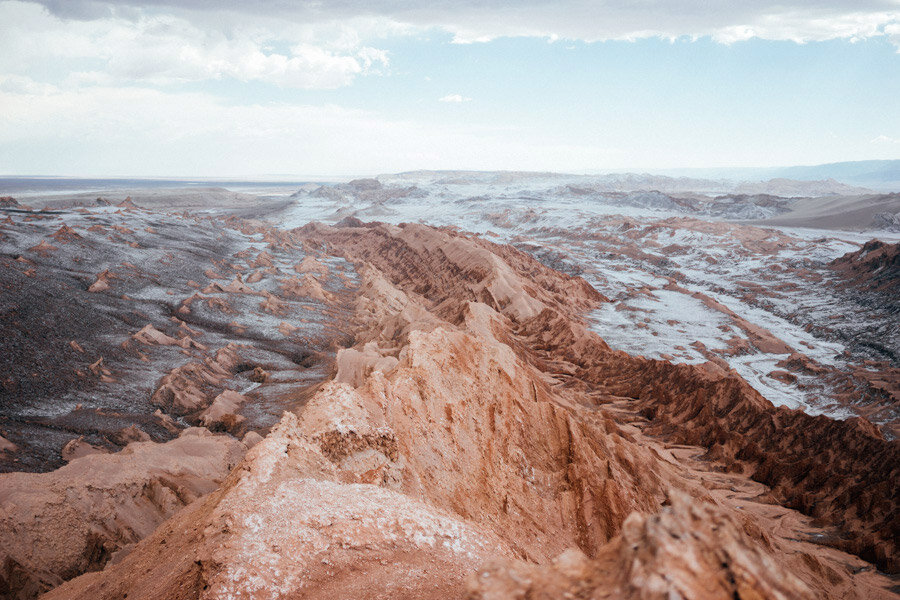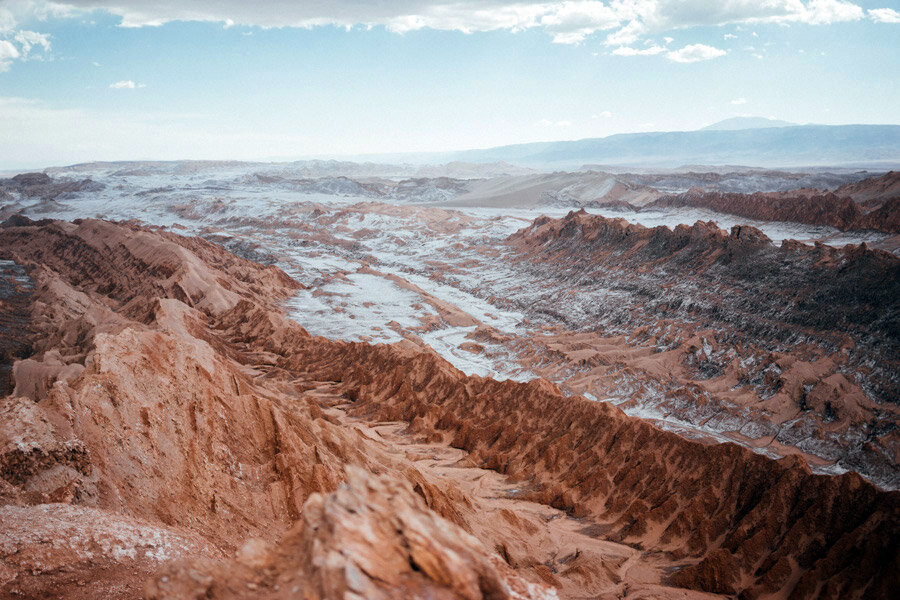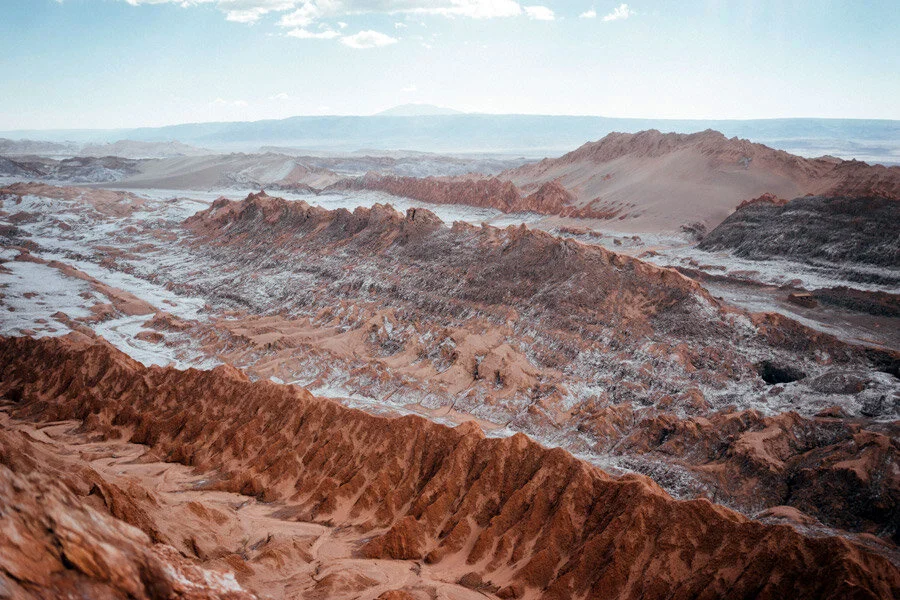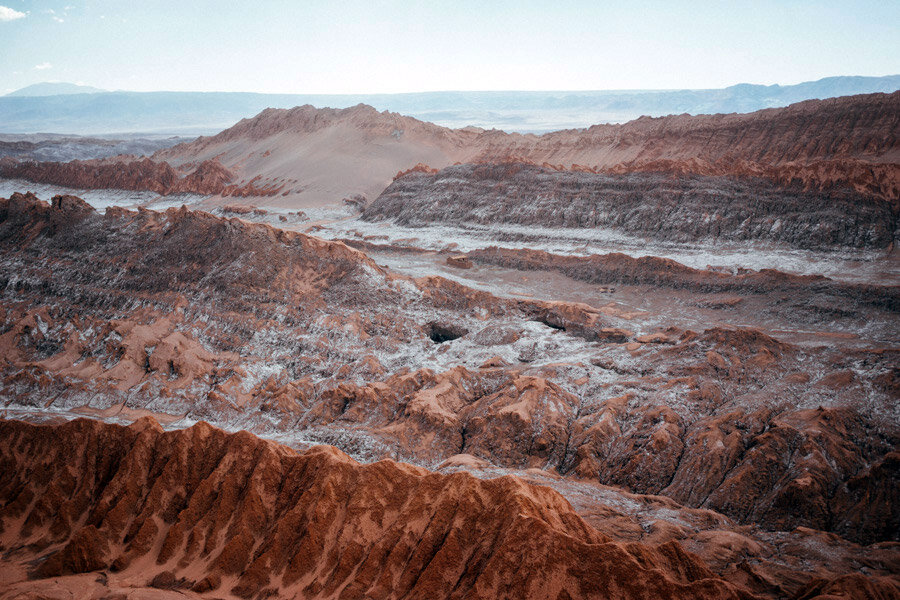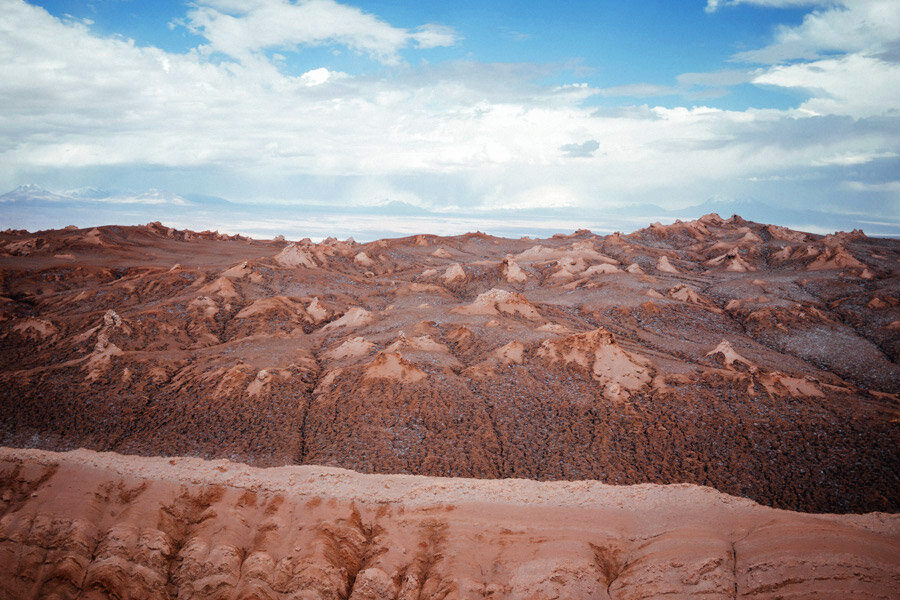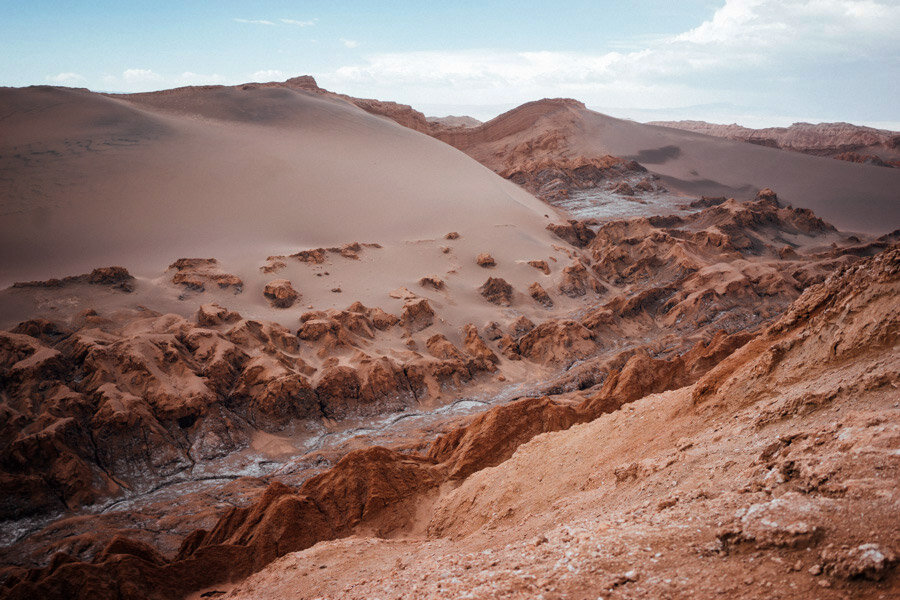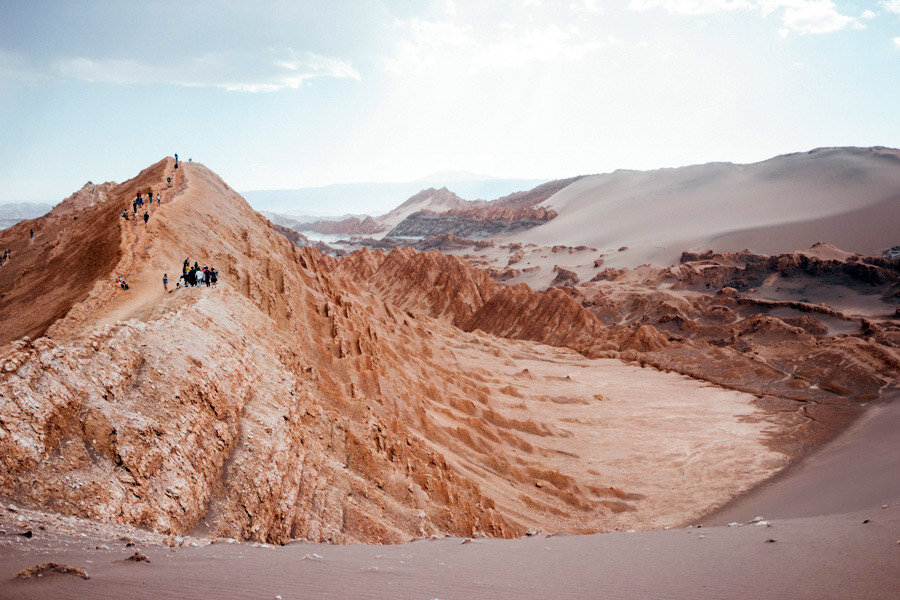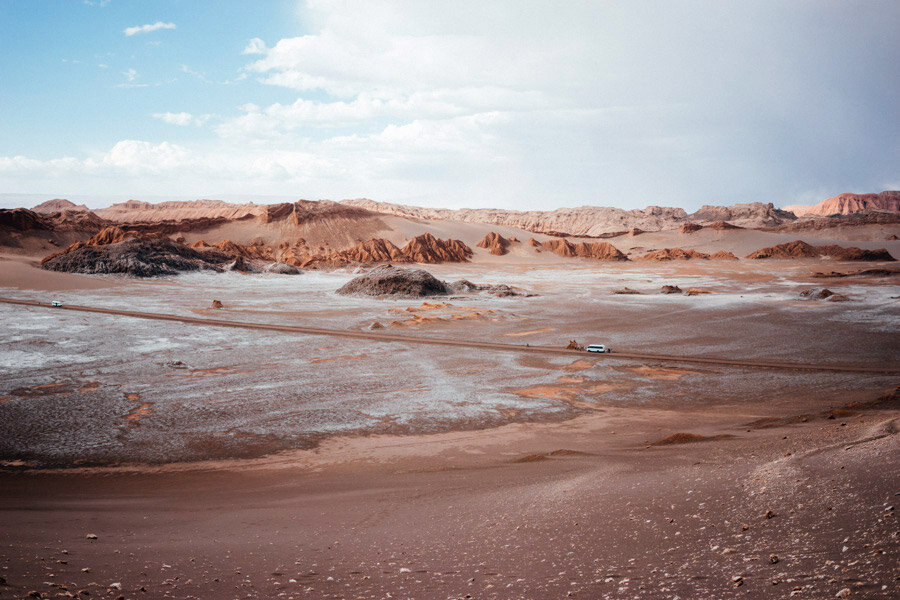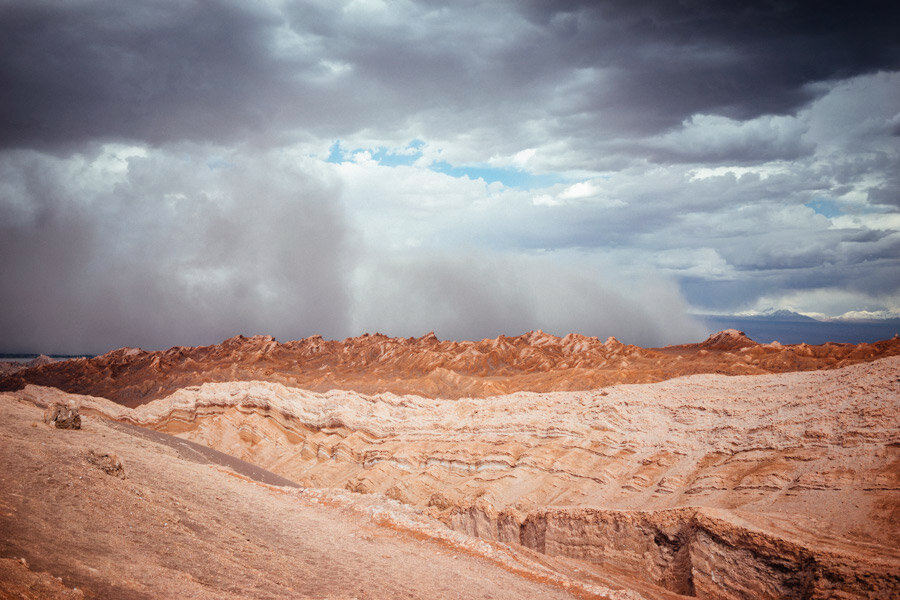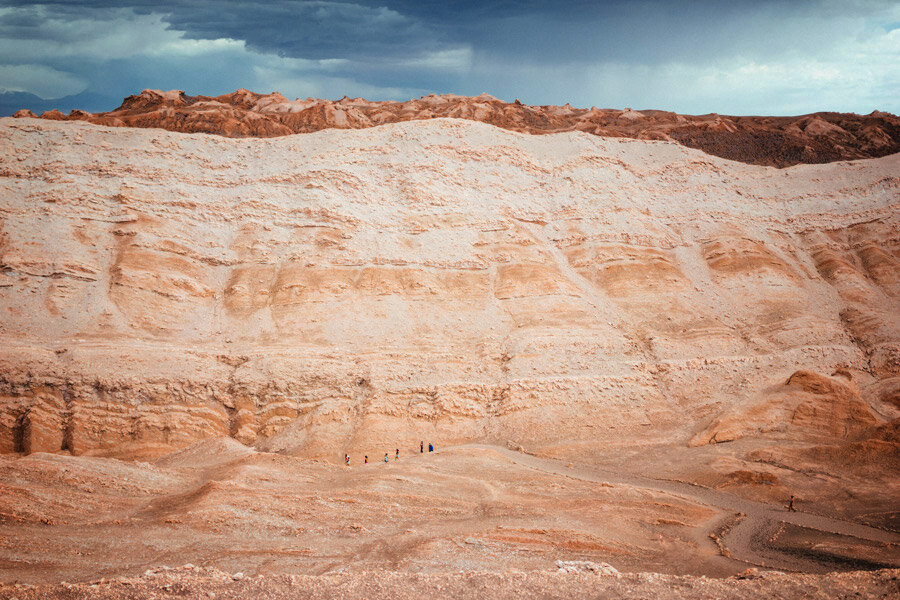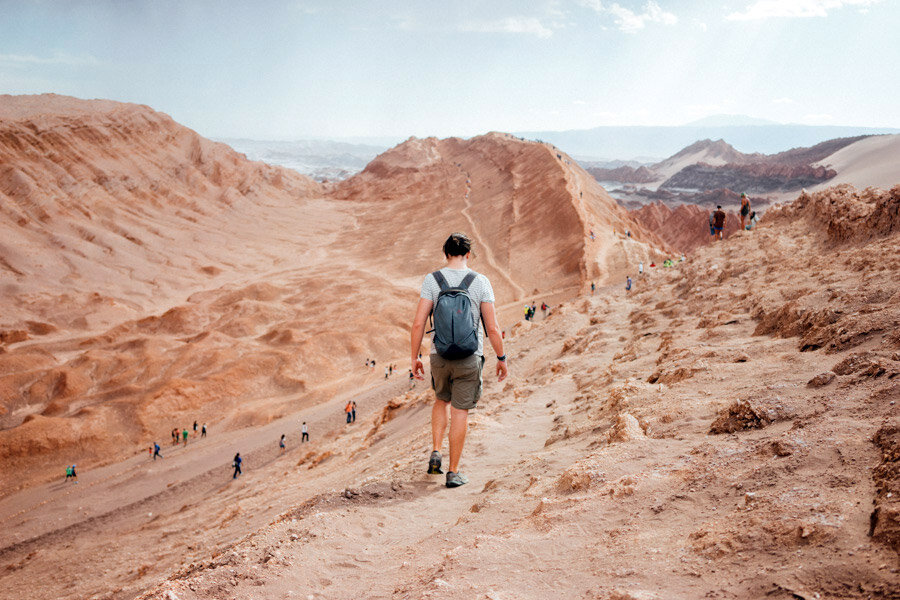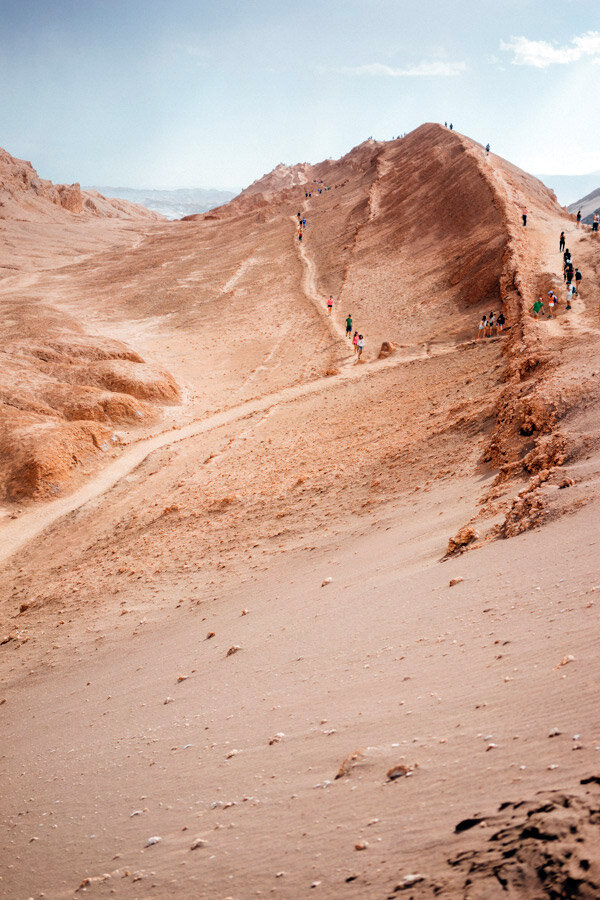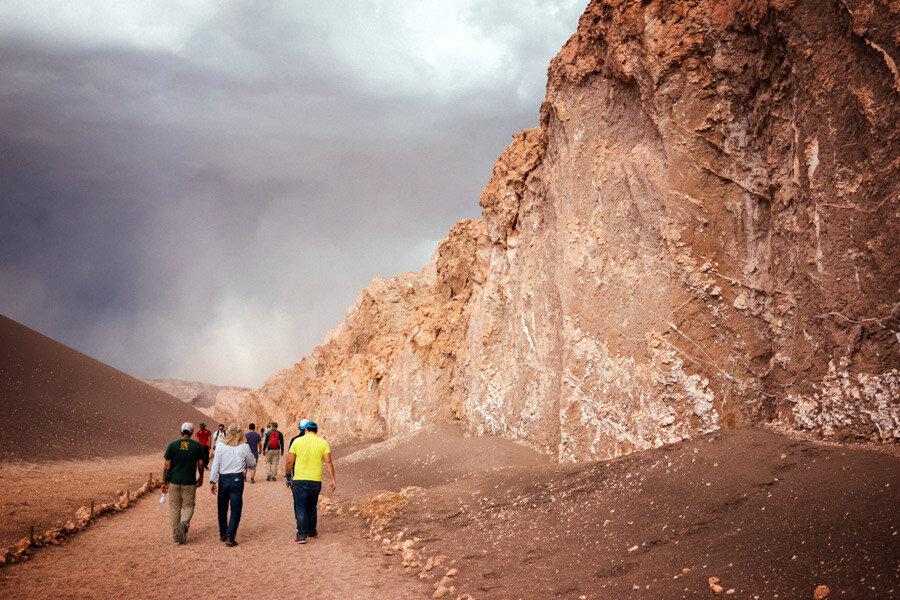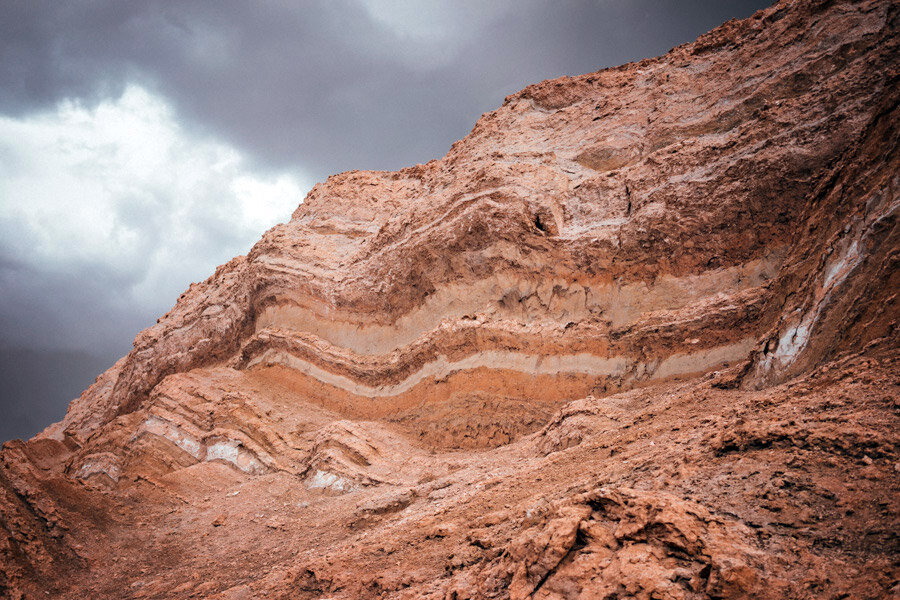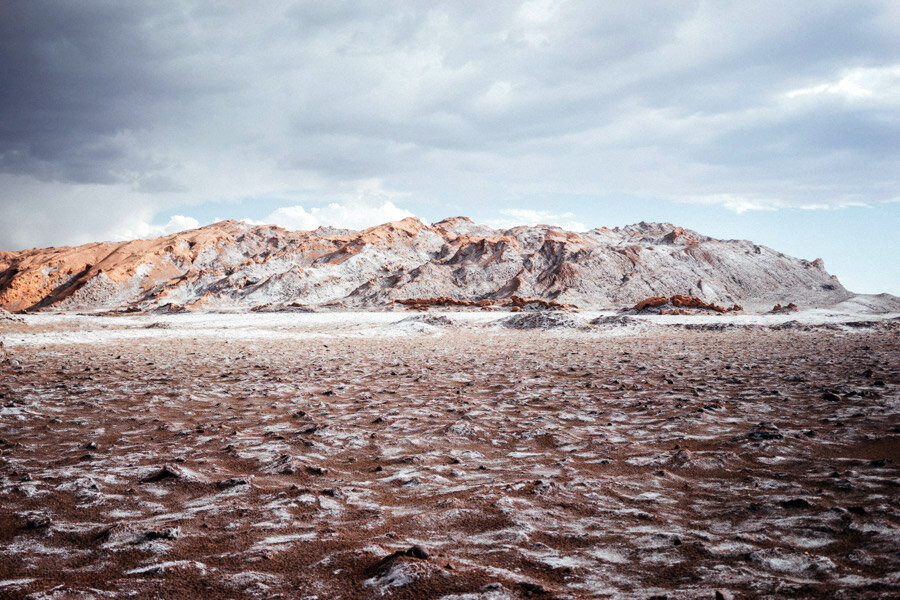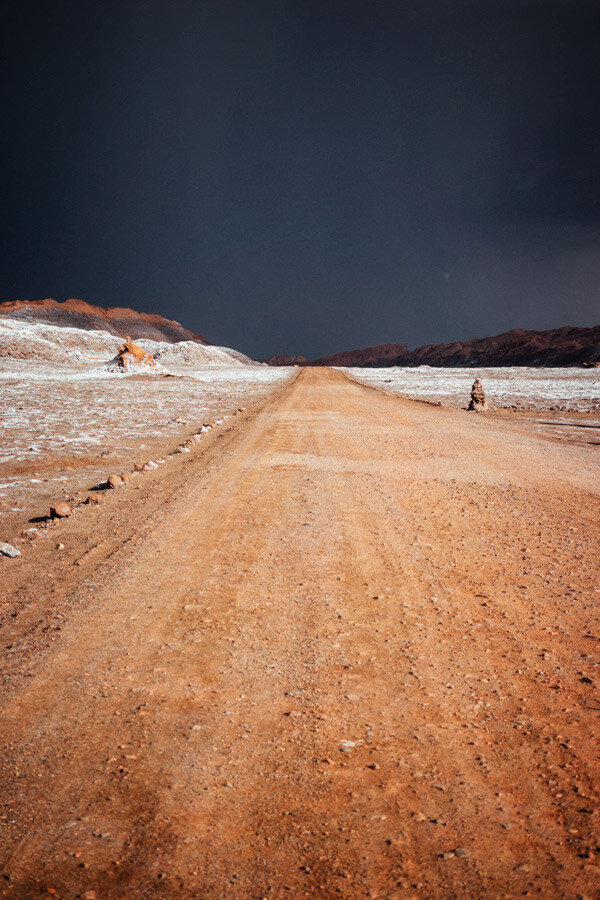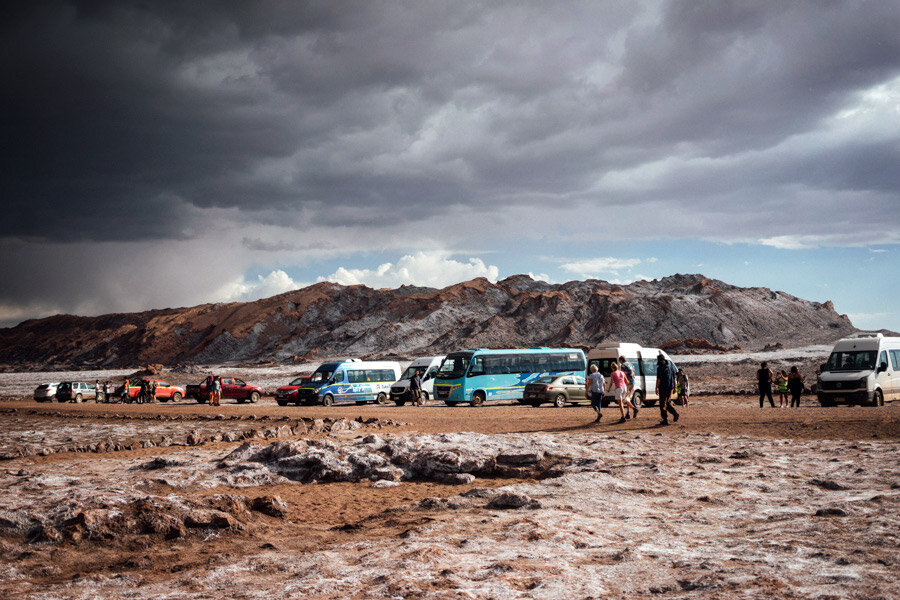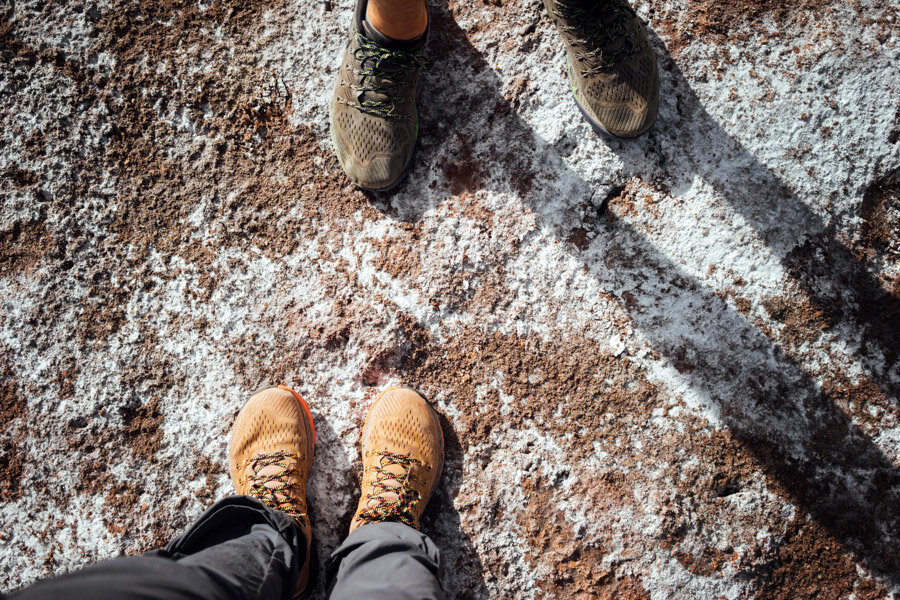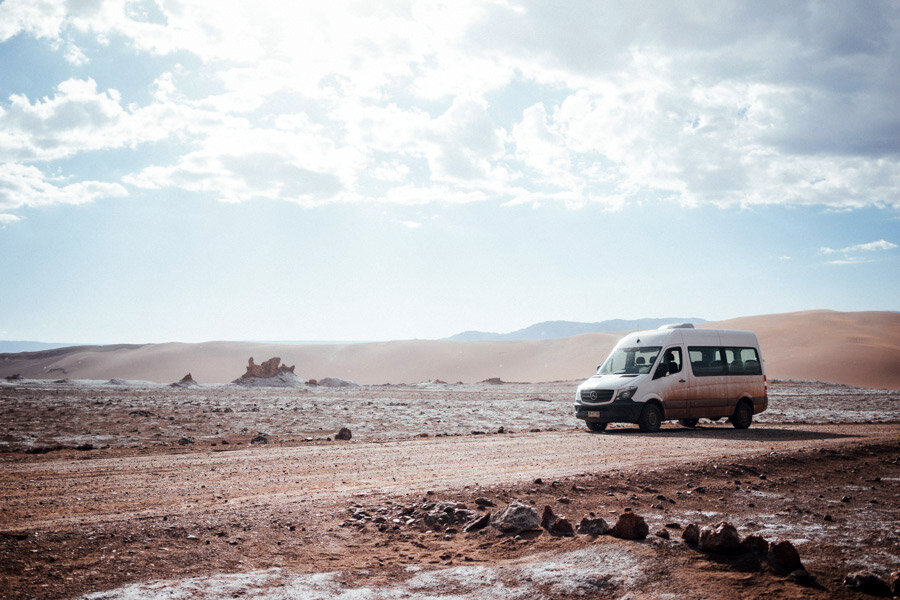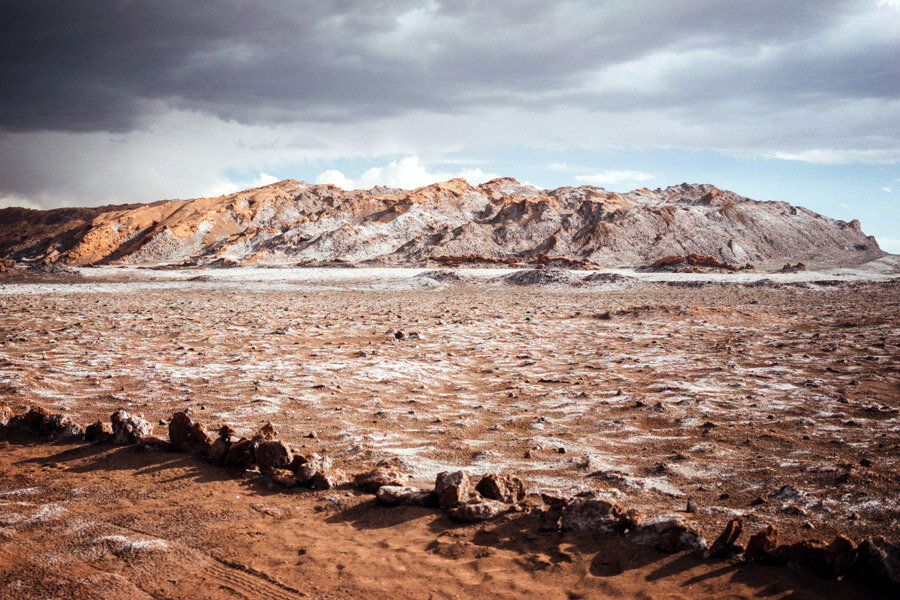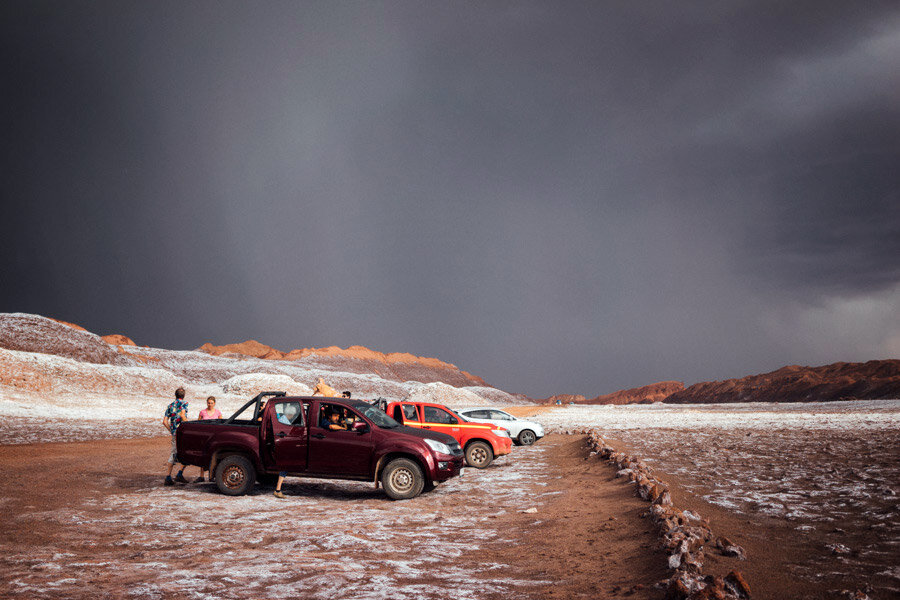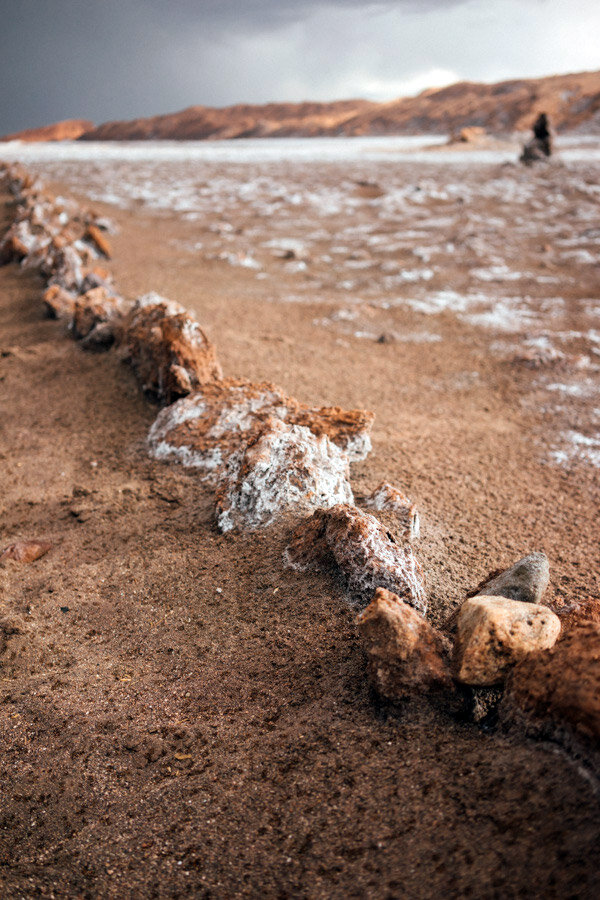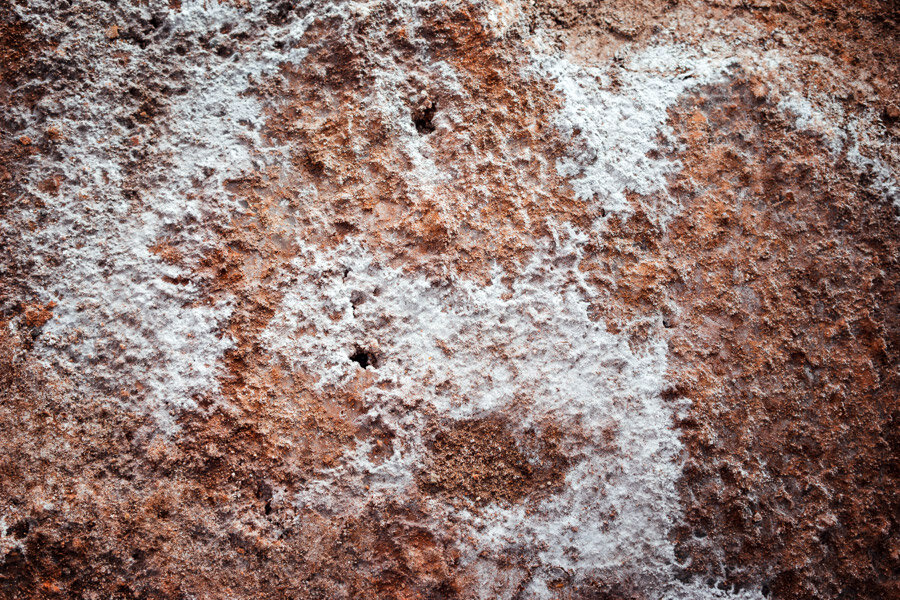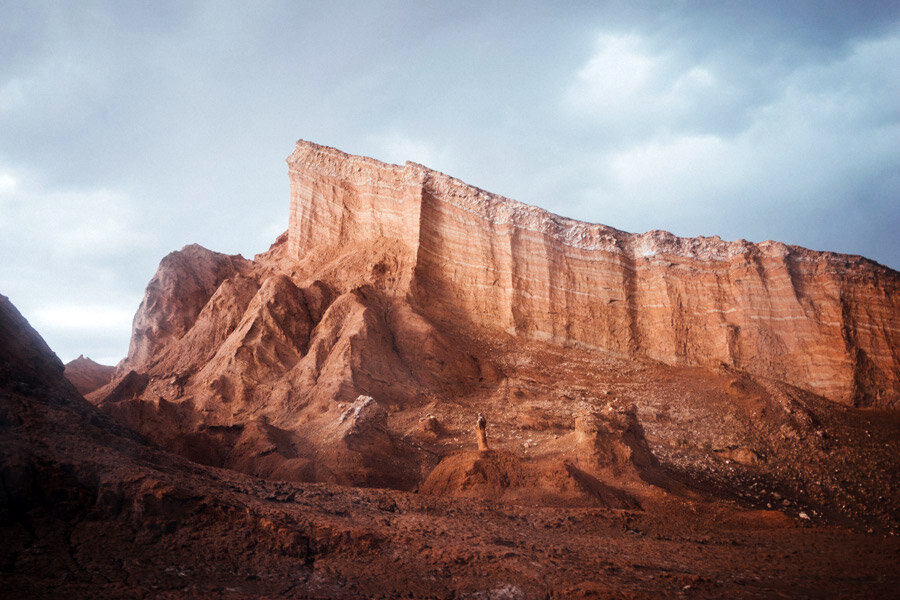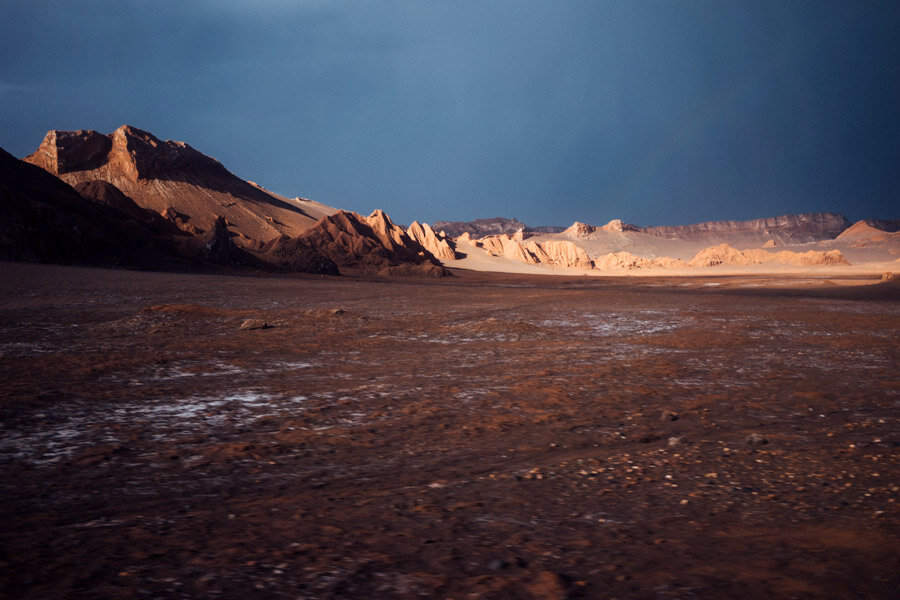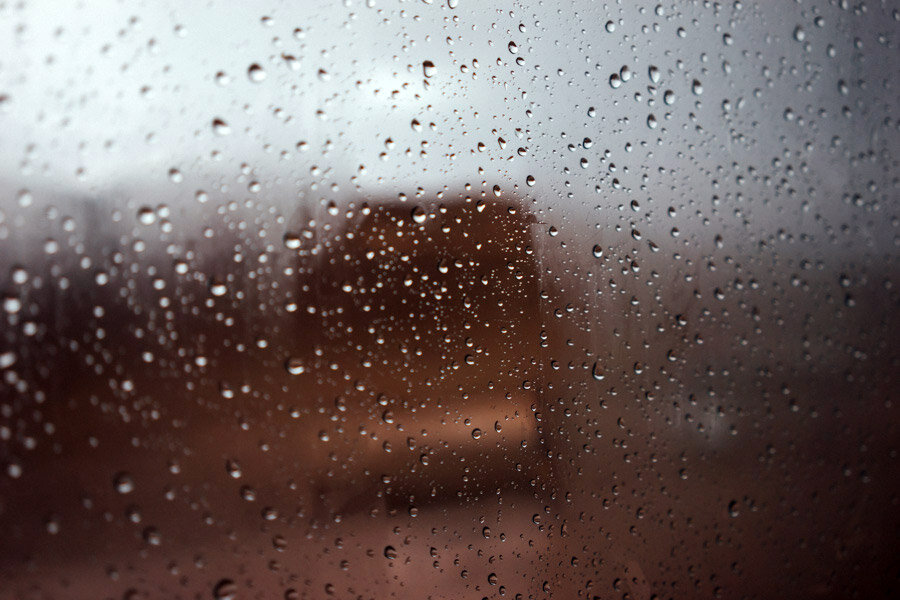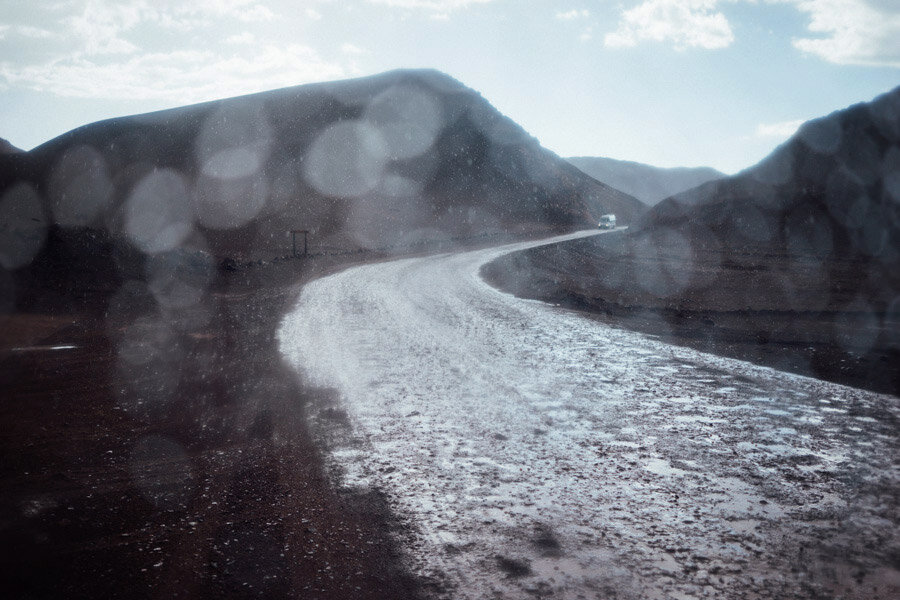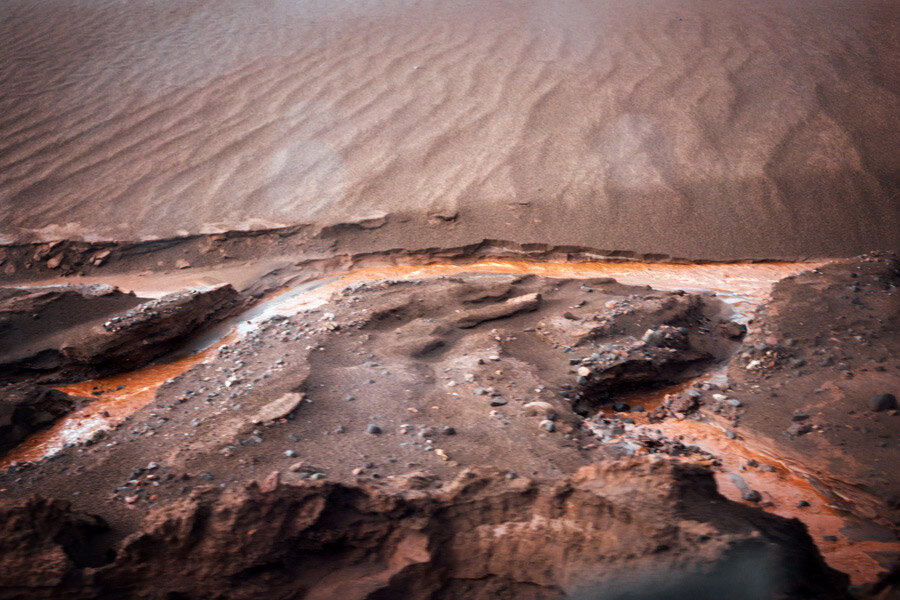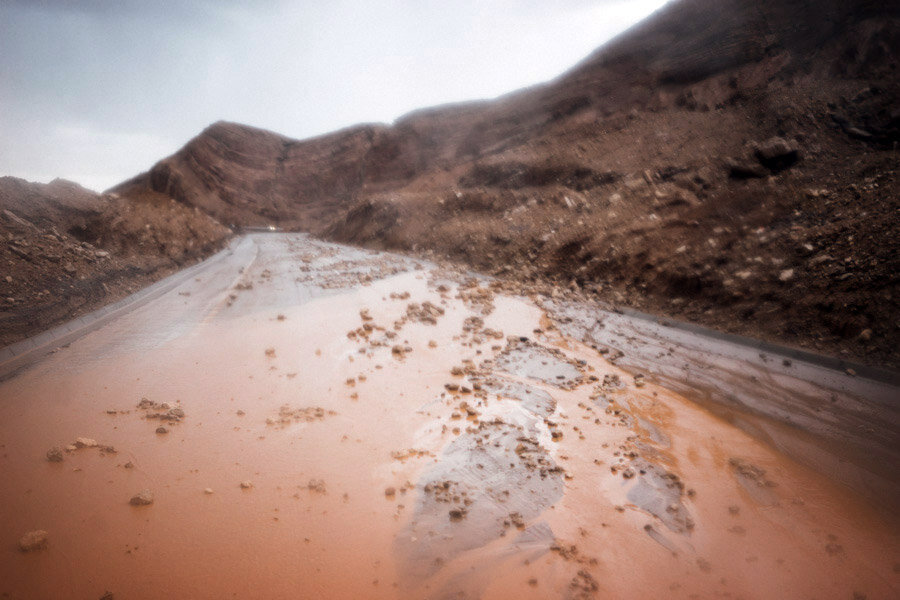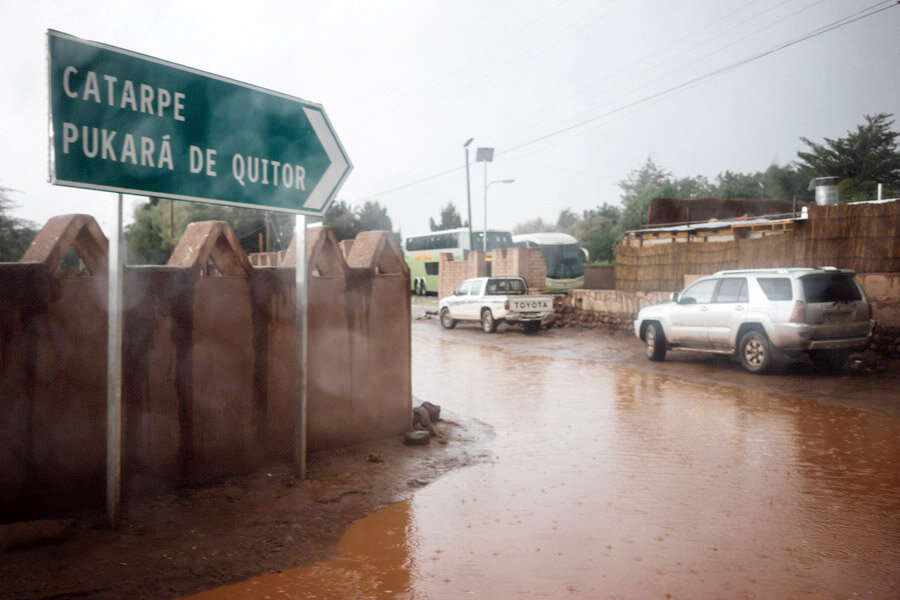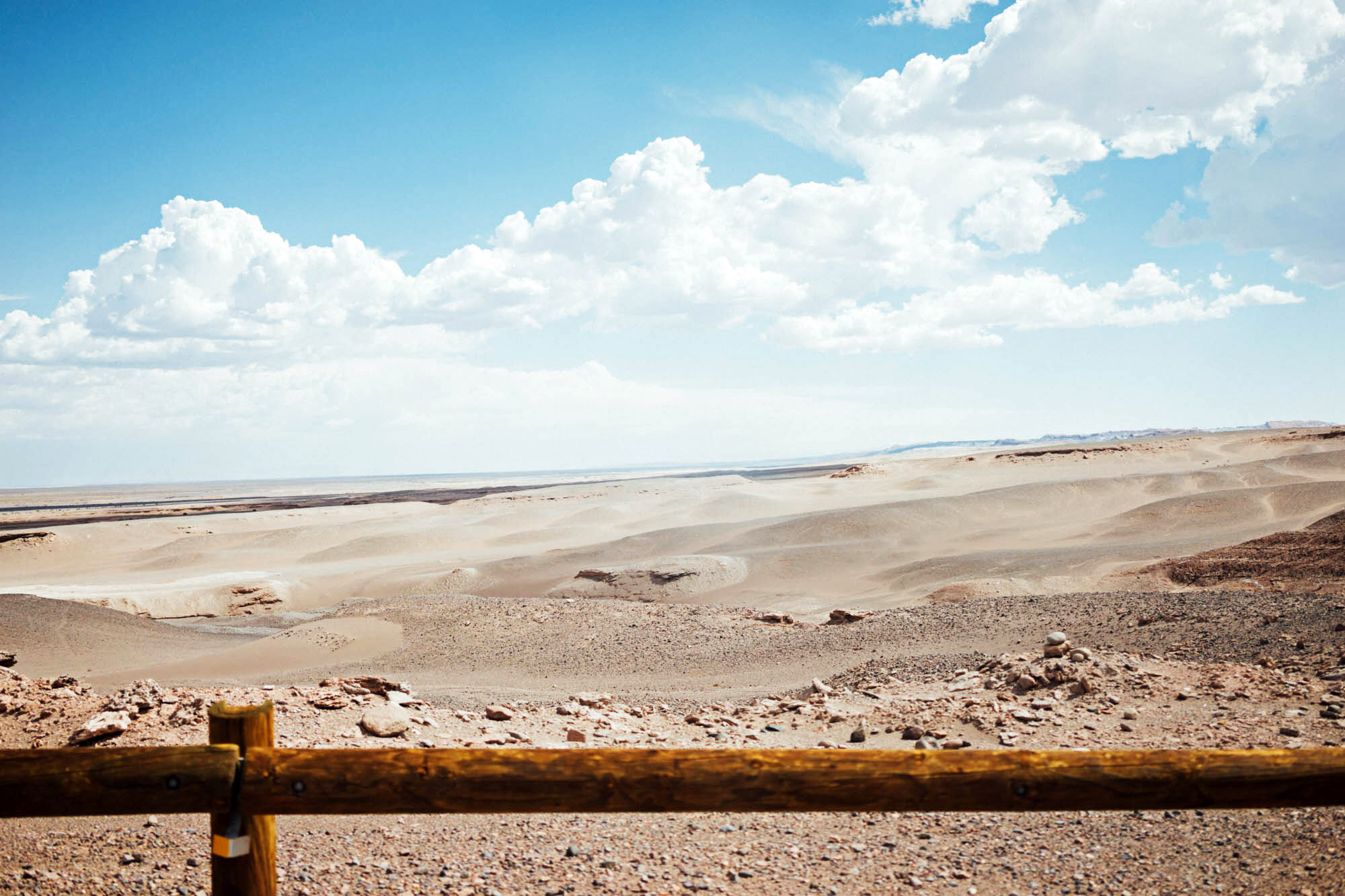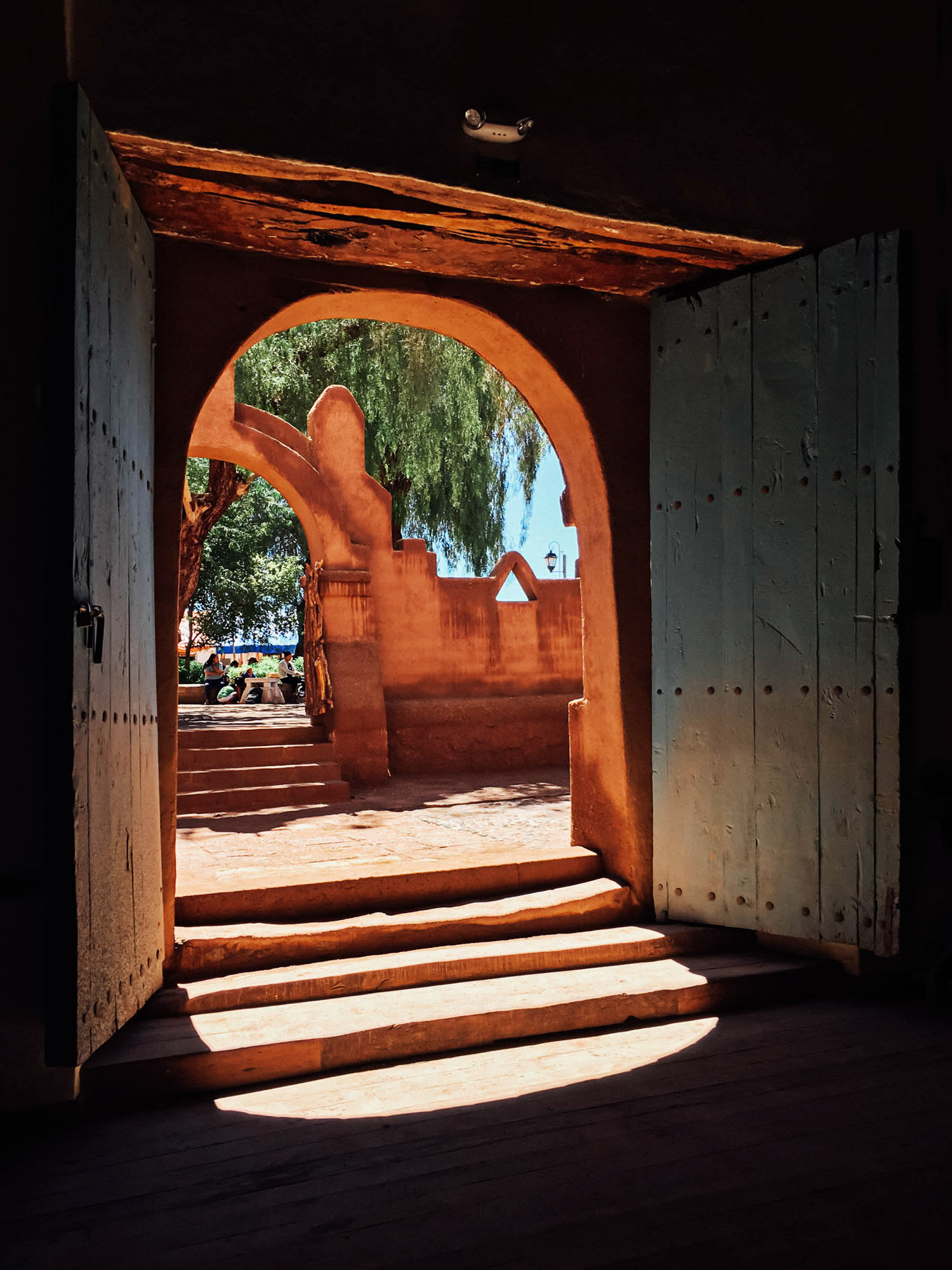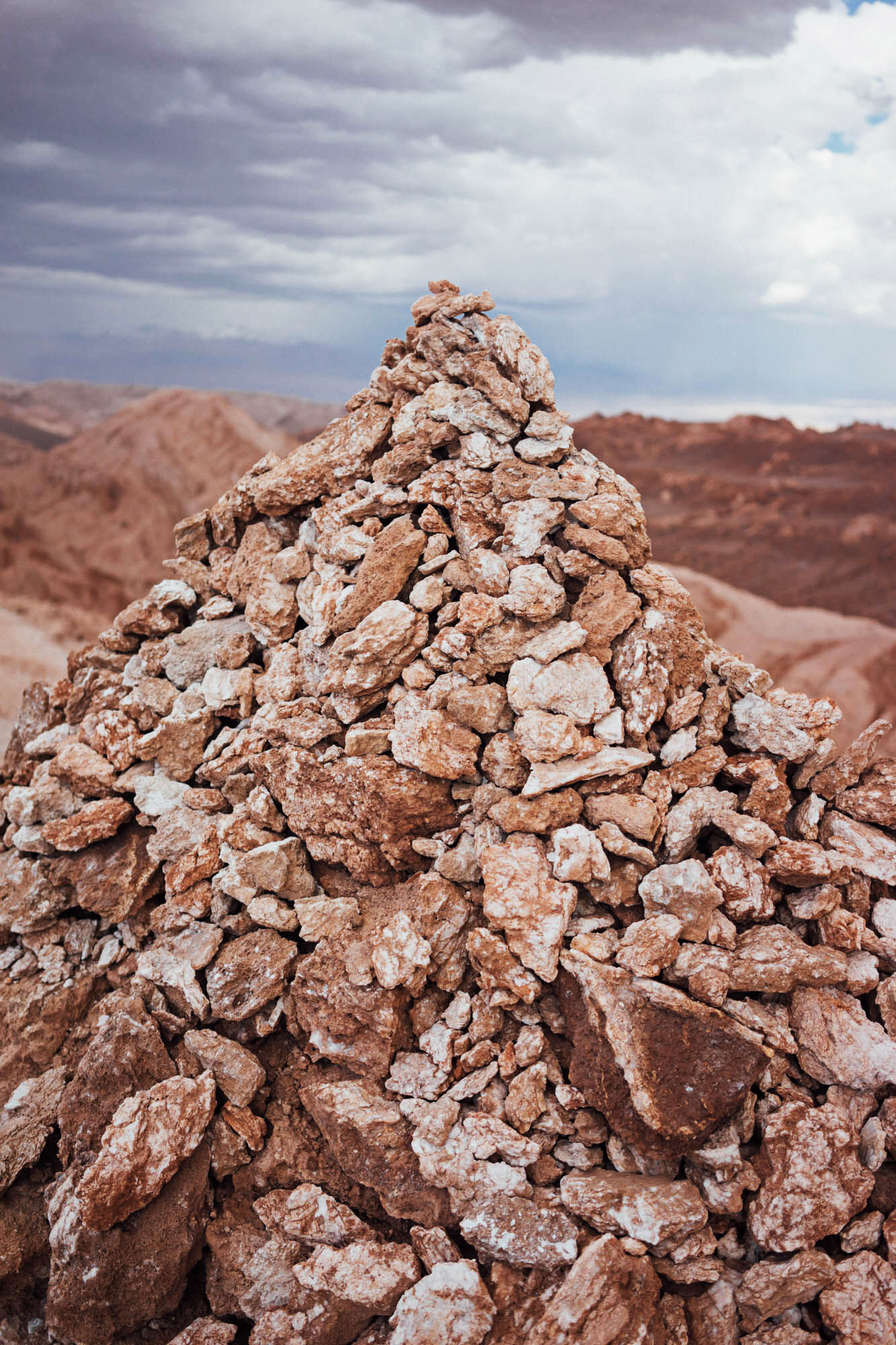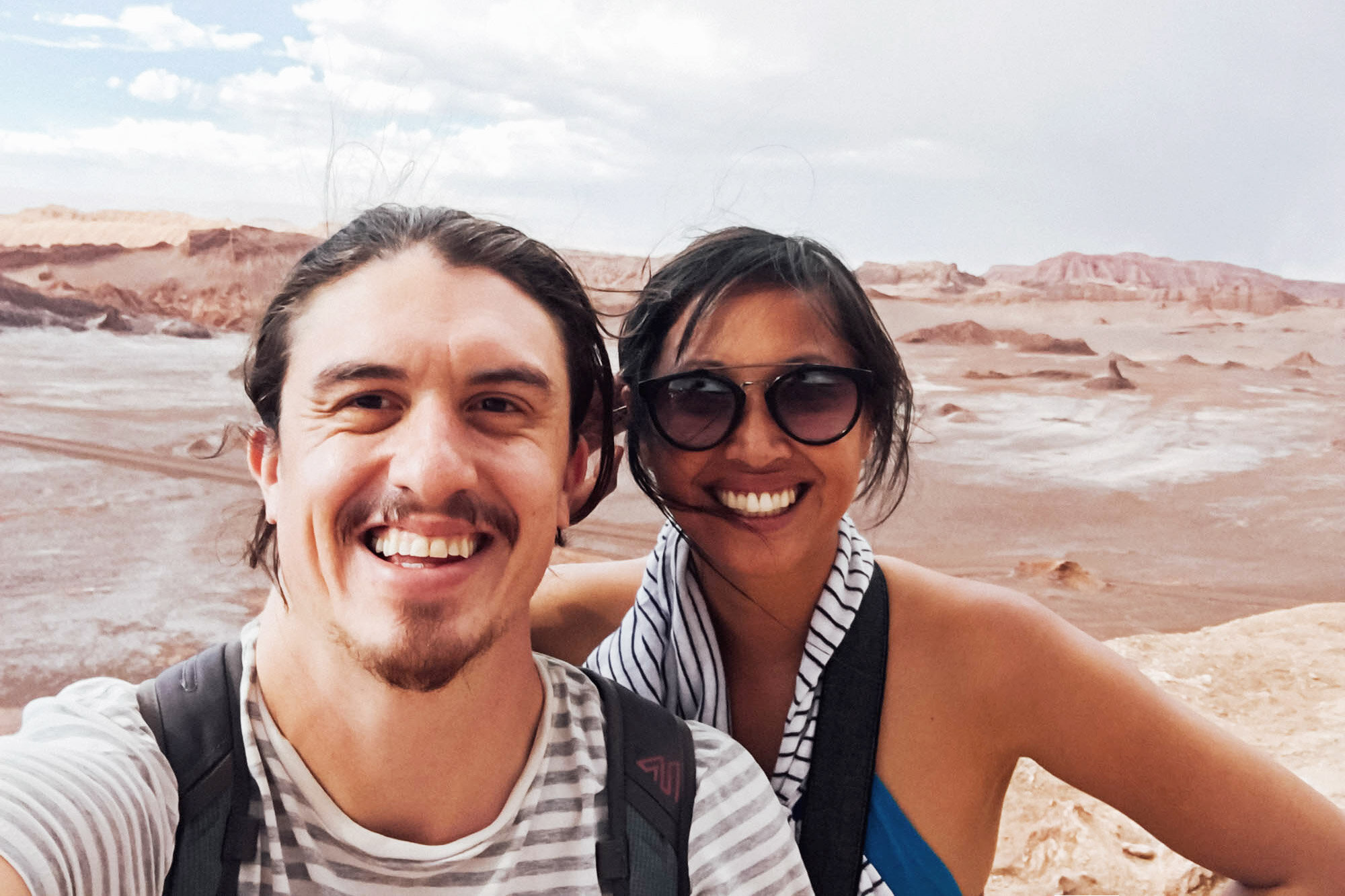From our travels in January 2017.
Jarabe De Palo - Depende
Antofagasta
We’re back in Santiago, hoping to get a Bolivian visa for Madie. As a US citizen, she can’t go for free, and because the consulate in Santiago is not authorized to give visas to US citizens (at the time), they advise us to try in Antofagasta or Arica, 16 to 20 hours by bus. We luck out on a cheap flight, $40 for a two hour trip instead of a dreaded overnight, overpriced ride.
As we approach Antofagasta, in awe of the arid landscape before us, we discover it’s an industrial coastal town, primarily used by mining companies. We’re in the Northern part of Chile, the driest region, and one we will learn later, contested by Bolivia, who wants its tribe’s territory back as well as access to water (Bolivia is only one of two landlocked countries in South America). “The Pearl of the North” has little to offer: expensive hotels (whose main purpose is to host businessmen?), a mall with a TGIFridays, and overlooking the historical square, a humble office with a line out the door, run by a single person, Felipe the Bolivian Consul.
After Sky Airlines loses my backpack, we still find the courage to go to the consulate, only to be turned away for missing photocopies. And today, Trump officially becomes president. It’s a bad day on all fronts, so we decide to limit the damage and do nothing instead. Visa will wait until Monday, or maybe we just won’t go to Bolivia. In eight months of travel, it’s one of the few times when all things seem stacked against us. We’re idling here.
After a side trip to Peru, my luggage finds its way to our hotel two days later. (I gained new trunks, a T-shirt and underwear as collateral, and spent a few days swimming in a pool overlooking the ocean, so it wasn’t all so bad). It’s Sunday - we feel a little better. Chile remains expensive, especially Antofagasta, so our lunches are limited to the hotel - fast food for dinner. We talk about our plans, and settle on trying the visa to Bolivia again. A few days later, it’s finally accepted, just in time for our bus to San Pedro De Atacama.
San Pedro De Atacama
And just like that, we cross the Andes by land for the fourth time. And once more, it is a completely different landscape. We see nothing, just rock, sand and dirt. This part of the Andes is dry and hot, nearly impossible for life to survive - still mesmerizing and beautiful in its own way. The only richness are minerals, we see a few mines as we pass by.
Four hours later we arrive in San Pedro De Atacama, the driest desert on Earth. Here, it rains only three days per year. The town is a tourist town, full of hostels, day trips to geysers, lagunas of flamingos, and some of the best stargazing in the world. With few days of rain, little to no light pollution outside, and 2500m elevation, it has the best conditions to look at the stars. But this year is exceptional; as in many countries in our travel, the weather is wack. It’s the 20th consecutive day with overcast and rain.
Despite the warnings, we take the sunset tour to La Valle De La Luna (the Moon Valley) and marvel at its large dunes and moon-like landscapes. An incredible succession of geological marvels within the site, somewhat reminiscent of Arizona’s deserts and parks, or Death Valley. As we climb towards a viewing point, a storm starts in the distance. We begin our leisurely 30 minute hike back to the car, and start running when the rain pours in large drops, thunder breaking meters from us. The guide does his best to continue, but we have to rapidly drive back to town before getting stranded.
San Pedro doesn’t do well in water, with the earth as compact as it is the rest of the year. Rocks fall on roads that become rivers, and entire sections are completely impassable. We somehow make it back to the hostel unscathed, only to find it completely flooded by the rain. We roll up our sleeves, our pants, and start helping the others bucket, sweep, funnel water out. By chance, our room was spared in the damage. After a couple hours helping and with the hostel finally under control, we cook in the dark and head back to our room. Somehow, she giggles - my little devil loves adventure, and this is one we will remember, Chile sending us off in style.
